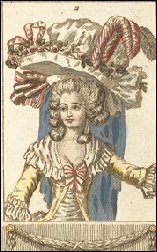column house divided affections


Above all, Paris was dominated by the presence of soldiers everywhere. It was they who kept order in the streets, in the churches, and guarded in great numbers the balconies and terraces of the Tuileries Palace. Paris was a military city governed by a general whose image was omnipresent. Bonaparte’s sober head adorned ladies’ ‘reticules’, was modelled into plaster of Paris busts and etched on morsels of barley sugar. Indeed, his person was one of the great attractions of the city. Foreigners, especially the English, had an insatiable curiosity to see him at one of the monthly military reviews in the courtyard of the Tuileries or to be received by him at one of his levées for the ambassadors. At the time of Maria’s arrival, he rarely appeared in public, realising that if he were too easily approached he would lose the fear and respect of the people. He withdrew often to Malmaison or St. Cloud, refusing to receive foreigners who had not been received at the courts of their own rulers.
None of these obvious changes touched Maria as much as the absence of the charming and gentle society she had known some fifteen years before. The Trudaine brothers and André Chénier, whom she knew as Monsieur Saint-André, had been unjustly executed. Worse, they had been betrayed by those from whom they should have most hoped for mercy. Chénier could have been saved by his own brother, the ambitious Marie-Joseph. For a year an unknown lady sent him a note every day with only these words: ‘Cain, where is your brother?’
The painter David, when a powerful member of the Committee for Public Safety during the Terror, had refused indifferently, even angrily, the poignant requests of his former benefactors, the Trudaines, to intercede for them. He turned his back on innocent people and let them be guillotined. The Marquis de Bièvre had at least died a natural death. Monsieur d’Angiviller was alone in Kiel, refusing ever to set foot in France. D’Hancarville was living impoverished in Italy. Madame de Corny was also living in dignified poverty in Paris. Maria’s Polish friends were scattered in Poland and America. Niemcewicz had married an American lady. Of Maria’s old circle the two who had not only survived but thrived were David and Monsieur de Non, now prudently known as Denon to hide his noble origins. Another artist who had successfully avoided the Terror was Madame Vigée Lebrun, long exiled, but now as wealthy and popular as ever, despite her former association with Marie-Antoinette.
Amidst the lingering aura of absent friends and the unattractiveness of their newly-rich replacements, Maria had no time for musing over the past. She had not come to Paris as a tourist to see sights or visit salons, but to work as an artist with an ambitious plan to copy and engrave all the pictures hanging in the Grand Gallery of the Louvre. She took every opportunity to send friends a prospectus of her work, even Jefferson, far away in America.
| reviews |
| Excerpt 1 |
| Excerpt 2 |
| Excerpt 3 |
| Excerpt 4 |